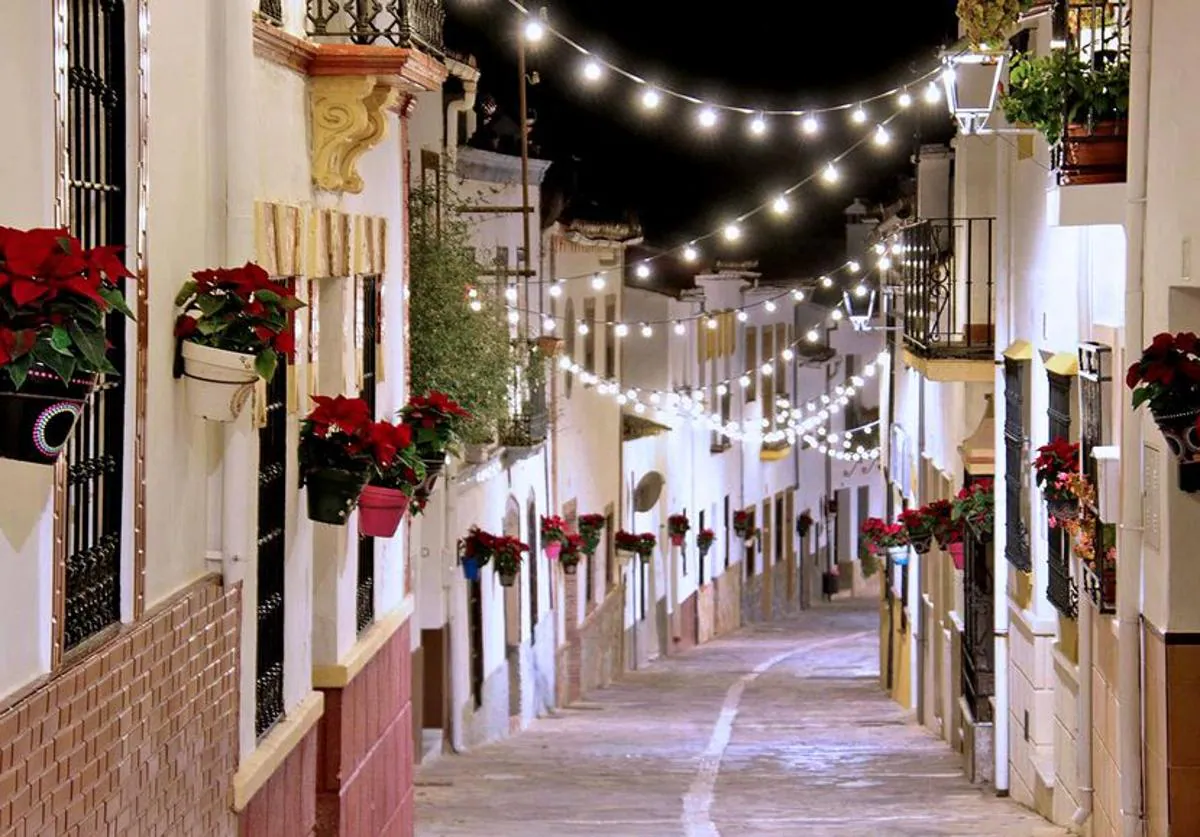

Sections
Highlight

Marta Fdez. Vallejo
Madrid
Wednesday, 20 December 2023, 18:07
The decorations we put up at Christmas often have a story behind them. They are not picked at random, they are often a symbol of some past event. We see them in shop windows, in shops, on buildings and we place them in our homes without really knowing their meaning. Some of the 'must-haves' are the red mushrooms with white polka dots, the flying reindeer hanging from the branches of the fir tree, the poinsettia plants, mistletoe ... but what is the meaning behind them?
Poinsettia
The deep red colour of the poinsettia leaves spread as Christmas icons all over the world from the middle of the last century onwards. "From time immemorial, poinsettias were known to the Aztecs. They symbolised purity and resurrection and were therefore placed on altars dedicated to warriors who died in battle and were reborn in a heavenly paradise," explained Professor Manuel Peinado
The value placed on this plant was the reason why Franciscan fathers who settled in Taxco in the 17th century began to use them to decorate their church at Christmas time. "It was there that Joel Robert Poinsett, the first US ambassador to Mexico, saw them. After returning home in 1829, he took some cuttings in his suitcase and began to grow them on his plantation in South Carolina. From there he gave flowering specimens as Christmas presents to all his friends," says Peinado.
But those responsible for the commercial revolution of poinsettias – the name by which they are known in the Anglo-Saxon world in honour of their 'discoverer' – are the Ecke family. Peinado said: "These Californian flower growers turned plants that few Americans had ever had in their hands into an essential decorative element from Thanksgiving to New Year's". And this Christmas ritual has become established in a large part of Europe.
Fairy mushrooms and flying reindeer
The red mushroom with white spots (Amanita muscaria) is a famous psychotropic species that has been used in magic rituals for centuries. "It is linked to the origin of the Father Christmas legend and also explains the scene of the flying reindeer on a sleigh loaded with toys," explained Sergio Fuentes, professor at the University of Salamanca.
"In Siberia, both reindeer farms and Amanita muscaria have been very common for hundreds of years. The reindeer are attracted to this mushroom, which they find very tasty and, after eating it, they experience altered states," he adds. Siberian tribes knew that once the toxin was filtered out of the mushroom, they could drink the deers’ urine and enjoy less harmful hallucinations. And so, "stories about flying reindeer soon emerged, most likely due to the hallucinations of those who drank the adulterated urine," Fuentes says.
There are more stories linking Christmas to this particular hallucinogenic mushroom. "One of them recalls that this fungus develops thanks to its association with trees such as pines and firs, among others," says the professor. It is therefore not uncommon to see it depicted in typical Christmas pictures under these trees.
One of its nicknames is 'dwarf mushroom', which relates to the accounts that “it is accompanied by gnomes and other fantasy beings such as the 'nisse', which, according to Nordic folklore, are mythological beings with the appearance of dwarfs, associated with the winter solstice and the Christmas season," Fuentes added.
The fir tree
The use of evergreen trees to symbolise eternal life was a custom of the ancient Egyptians, Chinese and Hebrews. "The ability of holly (Ilex aquifolium) to remain vigorous despite cold, rain and snow, together with its magnificent red and green colour combination, has led humans to consider this species as a symbol of strength and eternity since ancient times," said biologist Fátima Aguilera. Later, Christianity adopted it as one of the most characteristic Christmas symbols for its representation of eternal life.
In the 12th century, the custom of celebrating the feast on 24 December began with a theatrical performance, the Mystery Play, which became one of the most popular medieval Christmas plays. "The main element of that version of our sacramental plays was a 'tree of paradise' – a fir tree from which apples hung, symbolising the Tree of the Knowledge of Good and Evil in the Garden of Eden. When the Puritan winds suppressed these religious plays in the 16th and 17th centuries, the faithful moved the trees of Paradise from the stage to their homes," explained Professor Manuel Peinado.
Mistletoe
Mistletoe hung at the entrance to houses on Christmas Eve is another of the most common Christmas decorations. The tradition originated centuries ago in Scandinavia – the plant was believed to have magical and healing powers – and has spread throughout Europe over the years. Nowadays, mistletoe is placed to pay homage to the winter solstice and to bring good luck and health into the home. It is hung, it is said, so that once mistletoe is cut, it should not touch the ground.
Publicidad
Publicidad
Publicidad
Publicidad
Esta funcionalidad es exclusiva para registrados.
Reporta un error en esta noticia

Debido a un error no hemos podido dar de alta tu suscripción.
Por favor, ponte en contacto con Atención al Cliente.

¡Bienvenido a SURINENGLISH!

Tu suscripción con Google se ha realizado correctamente, pero ya tenías otra suscripción activa en SURINENGLISH.
Déjanos tus datos y nos pondremos en contacto contigo para analizar tu caso

¡Tu suscripción con Google se ha realizado correctamente!
La compra se ha asociado al siguiente email
Comentar es una ventaja exclusiva para registrados
¿Ya eres registrado?
Inicia sesiónNecesitas ser suscriptor para poder votar.